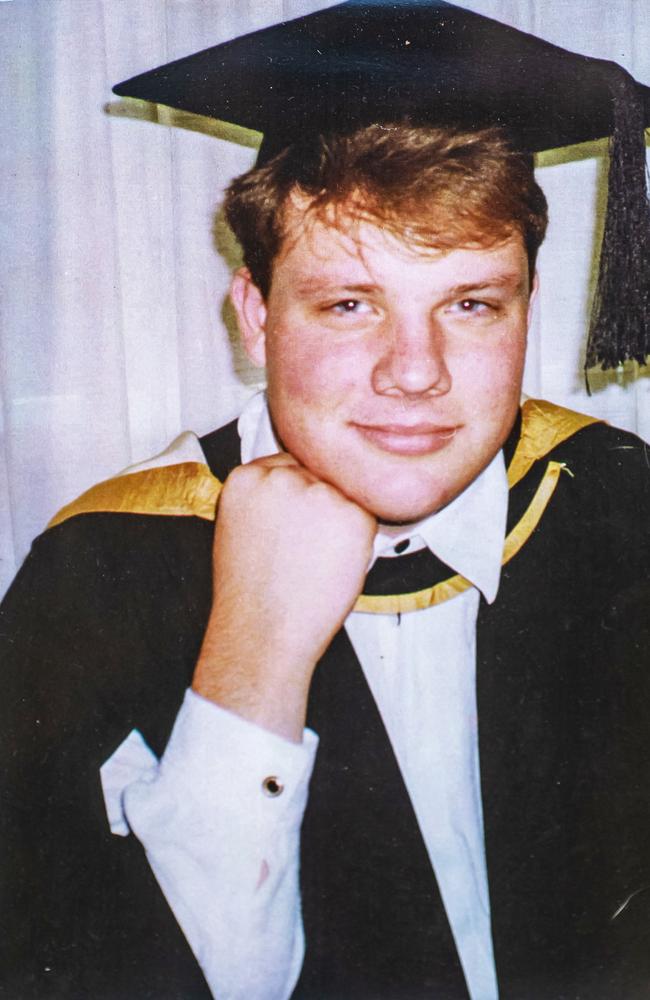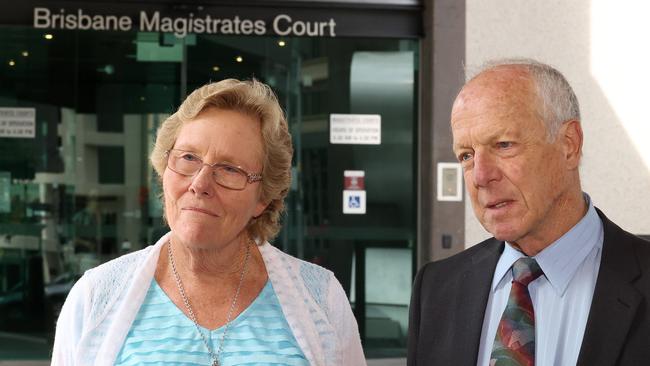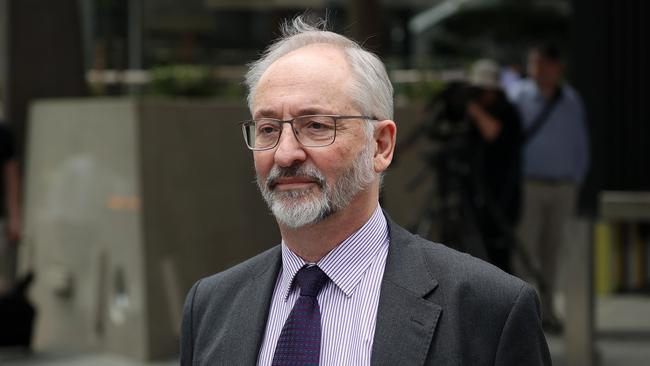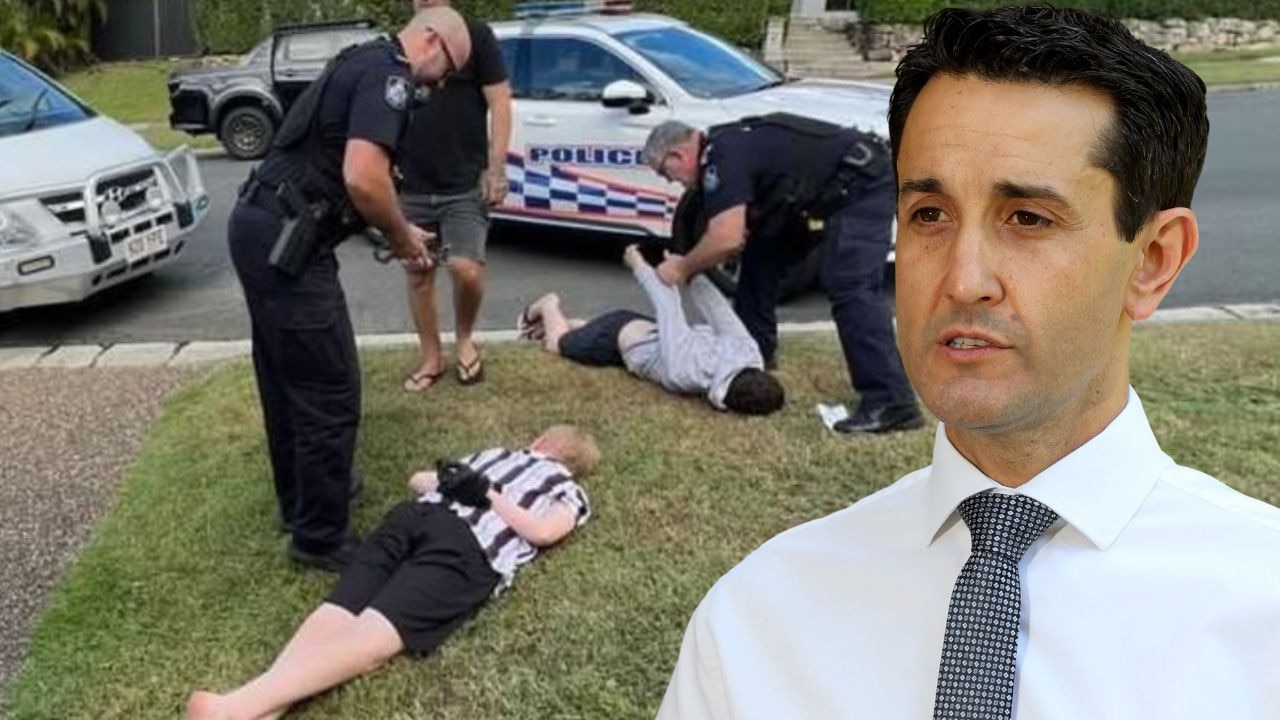Critical information about gun involved in Jeffrey Brooks’ death not available to experts
The parents of Jeffrey Brooks say they were not told of crucial details about the gun that killed their son, while ballistics and pathology experts have weighed in on what could have happened on the day he died.

Police & Courts
Don't miss out on the headlines from Police & Courts. Followed categories will be added to My News.
The parents of Jeffrey Brooks say critical information about the dodgy shotgun that killed their son was kept from them after police ruled his death an accident 26 years ago.
Mr Brooks was found dead sitting in the driver‘s seat of a utility with a bullet wound to his left shoulder in 1996 while working on a crayfish farm in Beenleigh.
A seven-day coronial inquest into his death explored three scenarios of how the shooting could have occurred to determine if the death was an accident or if Mr Brooks was murdered.

The first scenario involved police investigators’ belief that the faulty shotgun had accidentally discharged while Mr Brooks was reaching for it inside the ute; the second was the possibility Mr Brooks had been shot by someone through the passenger window while sitting in the driver’s seat and the third, Mr Brooks had been shot by someone while standing or kneeling outside on a grass embankment nearby the ute.
Witnesses were grilled on evidence of blood patterns, splatter, gunshot residue, bullet trajectory, the possibility of Mr Brooks’ being shot away from where his body was found and an alleged bitter dispute between Brooks and his former employer.
The employer has not been charged.
On the final day of the inquest the court heard from NSW ballistic expert Lucas van der Walt and renowned pathologist Dr David Ranson, who despite their extensive field knowledge, could not draw conclusive evidence on any scenario.
When asked whether his own extensive ballistic testing could determine how far away the gun was to Mr Brooks when it fired, Mr Van der Walt estimated the shotgun range to be within 10-80cm but more likely between 40-60cm.
His evidence coincided with the first scenario of accidental gun discharge, and also matched initial ballistic testing done by police.

But he also couldn’t rule out that the bullet wound could have been created by Mr Brooks’ being shot from close range from either the passenger side window or while standing or kneeling outside from above.
Mr Van der Walt said it was paramount he conduct his testing with the exact same gun, however as police destroyed the shotgun that killed Mr Brooks, he instead used a replica shotgun with a half choke and ammunition which was “as close as possible” to that used in the fatal shot.
He also criticised Ben Eu, another ballistic specialist and earlier witness in the inquest, telling the court that Mr Eu was unqualified, didn’t use the right testing materials and that his testing methods were solely based on the 3cm bullet wound measurement which he found irrelevant to finding the trajectory and proximity of the shotgun.
“The problem we start encountering with Mr Eu is the different ammunition,” Mr Van der Walt said.

“As soon as you introduce a new material or ammo, the scientific method is not being used anymore and becomes unacceptable in forensic terms.
“I think Mr Eu was also unaware of the finer details of the barrel … as well as the (half) choke.
“I didn’t see anything in his qualifications that highlights his ability to interpret (ballistic) wounds.”
Speaking to media outside the court, Lauwrie and Wendy Brooks said they also “were not privy” to crucial information about the gun that killed their son after it was destroyed 26 years ago.
“When Laurie was trying to do his testing, he could not get anything because they had destroyed the gun, and they would not give us any (gun-related) information,” Ms Brooks said.
“Some of the experts had the same problem, didn’t know what the choke was, some didn‘t even know the neck of the barrel, all sorts of things,” Mr Brooks added.
“Those critical things and the gun was destroyed four months after finding it. It was absolutely scandalous.
“This was absolutely critical evidence.”
The final witness, Dr Ranson, could not deliver a specific opinion on whether Mr Brook’s death was an accident or a homicide, saying he was limited to pathology findings of what happened to the bullet while already inside Mr Brook’s shoulder rather than what had happened before the bullet pierced the skin.
Dr Ranson said the bullet likely travelled in a downward, diagonal direction, potentially piercing near the neck first and then entering closer to the armpit.
He said better access to more photos of Mr Brook’s body before and after the bullet hole was cleaned and access to the original post mortem X-ray photos would have assisted his investigation.
It was earlier revealed in the inquest that the original X-ray photos mysteriously went missing, with only low-quality photos of them shown to the court today.
Dr Ranson concluded he could not provide any concrete insight as to how far away Mr Brooks was shot and on which angle due to the “infinite” variables including various states of rigor mortis and interference of skin elasticity.
Coroner Donald Mackenzie has provided all legal parties three months to provide their final submissions to the inquest before deciding whether Jeffrey Brooks’ death was an accident or homicide.
Before closing the court on Tuesday, Coroner Mackenzie commended Mr and Mrs Brooks on their demeanour both in and out of the court during the inquest.
“I hope the last seven days have been of some assistance to you already in opening up some of the fissures of the unknown that have arisen in this investigation,” Coroner Mackenzie said.
“I really do appreciate the way you have handled yourselves in I’m sure what has been – even after all of this time – a very emotional time for you.”
The inquest findings are expected to be delivered sometime in March 2023.


